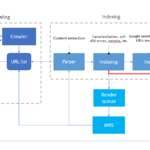Effectiveness of Home Workouts Using Body Weights
By Pankaj Dhuper, Fittr Coach, Fitness & Nutrition Consultant
#fittrcoach
Introduction
For individuals unable to attend a gym due to work, parenting, travel, or financial constraints, home workouts using body weight offer an efficient, effective, and scientifically validated alternative to gym-based training. Body-weight exercises have been shown to promote muscle hypertrophy, cardiovascular endurance, metabolic health, flexibility, and mental well-being — all without the need for equipment.
Scientific Benefits of Body-Weight Training at Home
1. Muscle Strength and Hypertrophy: How Body Weight Builds Muscle
Studies show that muscular hypertrophy and strength gains are driven by mechanical tension, metabolic stress, and muscle fatigue — not necessarily by external weights alone.
According to a 2012 study published in the Journal of Strength and Conditioning Research, performing body-weight exercises to muscular failure (like push-ups) can elicit similar hypertrophy responses as traditional resistance training (e.g., bench press), especially in beginners and intermediates.
Mechanism:
- Muscle protein synthesis is stimulated when muscle fibers are fatigued under time-under-tension.
- Body-weight movements like push-ups, pull-ups, squats, and dips can be made progressively harder by changing angles, tempo, and leverages.
“Muscle doesn’t know the weight; it only knows tension.” – Common exercise physiology principle
2. Cardiovascular and Endurance Gains: Boosting VO₂ Max and Core Stamina
Body-weight workouts that involve compound, high-rep movements (like burpees, jump squats, mountain climbers) significantly improve aerobic capacity and muscular endurance.
A 2016 study published in PLOS ONE found that 8 weeks of bodyweight high-intensity interval training (HIIT) resulted in a 33% increase in VO₂ max and 11% improvement in core endurance.
What this means:
- Improved oxygen utilization
- Better cardiovascular efficiency
- Reduced fatigue in daily tasks and sports
3. Functional Fitness and Movement Efficiency
Functional training refers to movements that mimic real-life activities. Exercises like lunges, squats, and bear crawls engage multiple joints and muscle groups in unison, improving neuromuscular coordination.
Key Benefits:
- Enhanced proprioception (body awareness)
- Better balance and joint stability
- More efficient movement patterns in daily life
This type of training improves kinetic chain integration, a foundational principle in rehabilitation and athletic conditioning.
4. Joint Safety and Injury Prevention
Body-weight exercises are closed-chain movements, meaning the distal limb (hands or feet) remains fixed. These movements have been shown to reduce shear stress on joints compared to open-chain weighted exercises.
According to the National Academy of Sports Medicine (NASM):
- Body-weight training reduces the risk of soft-tissue injuries
- It’s ideal for beginners or those recovering from injury
This makes it an excellent starting point for lifelong fitness.
Practical Advantages of Home-Based Body-Weight Training
1. Convenience and Consistency
- No need for a gym membership or commute
- Can be done in small spaces — hotel rooms, living rooms, balconies
- Zero equipment needed for effective full-body workouts
This eliminates barriers to consistency, which is the most critical variable for success in any fitness plan.
2. Mental Health and Lifestyle Benefits
Body-weight exercise has been correlated with:
- Increased BDNF (brain-derived neurotrophic factor) – supports brain function
- Improved mood and anxiety levels due to endorphin release
- Better sleep quality and reduced stress
A review in Frontiers in Psychology (2019) supports the mental health benefits of consistent home workouts.
3.Chronic Disease Prevention
Regular physical activity, including body-weight training, contributes to:
- Improved insulin sensitivity
- Lower blood pressure and triglycerides
- Stronger bones and reduced risk of osteoporosis
The World Health Organization (WHO) endorses body-weight exercises as a valid form of physical activity to combat global inactivity-related chronic diseases.
Limitations and How to Overcome Them
1. Plateaus in Muscle Growth
For those seeking advanced hypertrophy, body-weight training may plateau due to limited resistance.
Solutions:
- Introduce advanced variations (e.g., one-arm push-ups, pistol squats)
- Add time-under-tension by slowing reps
- Increase volume and frequency
2. Lack of Pulling Movements
Most home body-weight routines emphasize pushing (push-ups, dips), but pulling (rows, pull-ups) may be limited without equipment.
Solutions:
- Use resistance bands or a pull-up bar if available
- Perform inverted rows under a sturdy table
FAQs – Home Bodyweight Training
Q1: Is bodyweight training enough for building serious muscle?
Yes, especially for beginners to intermediates. Progressive overload can be achieved via reps, tempo, and movement complexity.
Q2: How many days per week should I train at home?
3–5 sessions/week with focus on full-body workouts, recovery, and mobility work.
Q3: Can I lose weight with just bodyweight training?
Absolutely. Caloric deficit + consistent training (especially circuits or HIIT) supports fat loss.
Q4: What if I travel a lot — can I still stay fit?
Yes. Your body is your gym. You can train anywhere using short, intense routines (15–30 mins).
Q5: How do I track progress without weights?
Track reps, sets, tempo, recovery time, and movement variations. Also monitor body measurements and strength endurance (e.g., max push-ups in 1 minute).
Final Thoughts by the Author
As a Fittr Coach who has worked with a wide spectrum of individuals — from busy professionals and homemakers to frequent travelers — I can confidently vouch for the efficacy of structured body-weight training.
You don’t need a gym to transform your body. What you need is discipline, progression, and consistency. When done right, home workouts using body weight can improve your strength, physique, endurance, and even your mindset.
So, if life’s commitments are keeping you away from traditional gyms — don’t pause your fitness journey. Start where you are, with what you have. Your body is the only equipment you need.
Stay fit. Stay consistent.
– Pankaj Dhuper
Fittr Coach | Fitness & Nutrition Consultant
#fittrcoach









